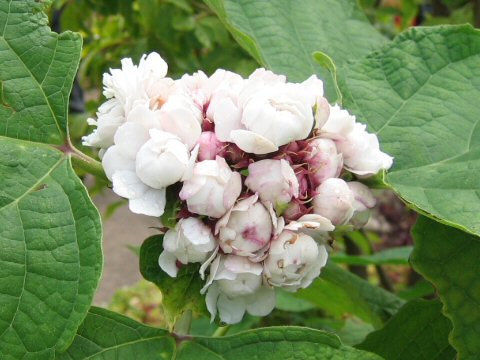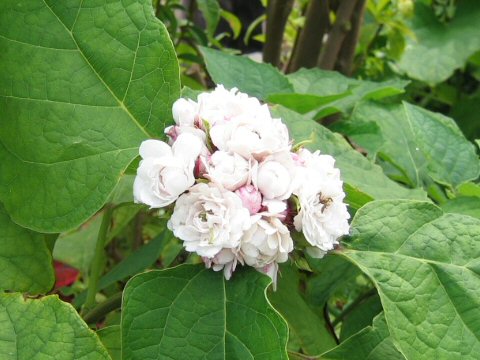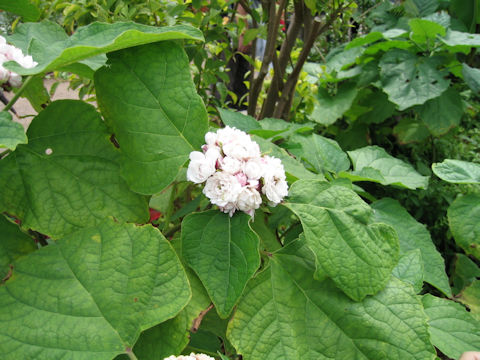 |






|

|
Ìì©çxgikÉ©¯ÄªzµÄ¢Ü·BäpÉÍA»µÄ¢Ü·B³ÍQ[gÙÇÉÈèAlp`Ì}ÉÍѪ§¶µÄ¢Ü·BtÍL`ÅAÉÍsK¥Èª èAζµÜ·B}æÌWUÔÉAFÌ éF©çW¢sNFÌÔð穹ܷBäpØêÅÍuLää»vAêÅÍudáALää»ichong ban xiu mo lijvÆÄÎêÜ·BB
|

|
N}cdÈNTM®ÌíάáØÅAw¼Í Clerodendrum chinenseBp¼Í Honolulu roseAStickbushAGlory bowerB
|

|
The Honolulu rose (Clerodendrum chinense) belongs to Verbenaceae (thr Verbena family). It is an evergreen shrub that is distributed from southern China to northern Vietnam. It is naturalized in Taiwan. The height is about 2 m, and the square branches are densely covered with bristles. The leaves are thin and broad-ovate, with irregular serrations on the edges and opposite. The fragrant white to pale pink flowers bloom on the inflorescences at the tips of the branches. In Taiwanese Chinese, it is called "Lää»", and "dáALää»" (chong ban xiu mo li) in Chinese.
|

|
ê§l¼sul¼ÎÔvÉÄA2004N0919úBeB
|




